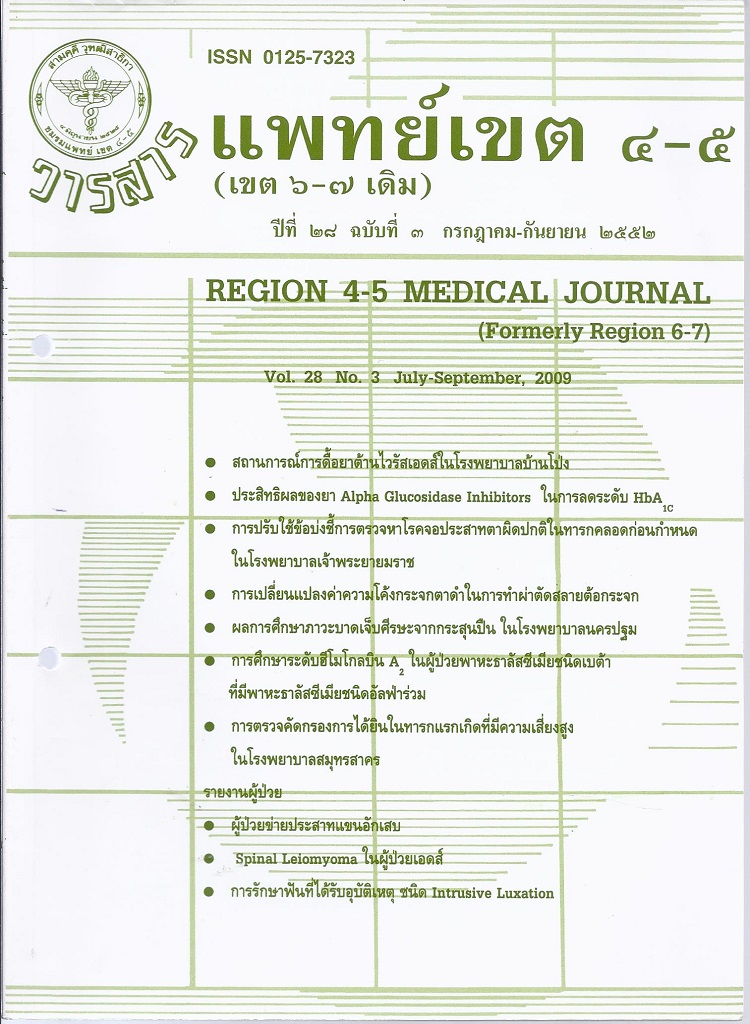การตรวจคัดกรองการได้ยินในทารกแรกเกิดที่มีความเสี่ยงสูง ในโรงพยาบาลสมุทรสาคร
คำสำคัญ:
การคัดกรองการได้ยิน, ทารกแรกคลอดบทคัดย่อ
Objectives : To determine the prevalence and risk factors of neonatal hearing loss in the high-risk group.
Material and method : A descriptive study, using the criteria of "high-risk" as defined by the Joint Committee of Infant Hearing 1994, American Academy of Pediatrics, 168 neonates in Samutsakorn Hospital were screened with portable otoacoustic emissions (OAE) before being discharged between July 1st , 2006 and December 31st , 2008. Based on the examinations, the results were divided into two groups, “pass" and "refer". Infants who failed 2 consecutive OAE tests were reoonfirmed by ABR and/or ASSR.
Results : One hundred and three infants (61.3%) in the high-risk group passed the primary screening for,both ears. Six infants (3.6%) were confirmed with sensorineural hearing loss. Twenty nine infants (17.3%) were lost to follow up. High-risk factors in the infants with sensorineural hearing loss were Down syndrome (1), Craniosynostosis (1) , maternal HIV infection (1), hyperbilirubinemia at a level requiring an exchange transfusion (1), Apgar scores of 0-4 at 1 minute or 0-6-at 5 minutes (3), birthweight fewer than 1,500 grams (4), mechanical ventil-ation lasting 5 days or more (4) and ototoxic medications (5).
Conclusion : Newborn hearing screening by using otoaooustic emission was useful and could identify the infants with sensorineural hearing loss urgently.
ดาวน์โหลด
เผยแพร่แล้ว
รูปแบบการอ้างอิง
ฉบับ
ประเภทบทความ
สัญญาอนุญาต
ลิขสิทธิ์บทความเป็นของผู้เขียนบทความ แต่หากผลงานของท่านได้รับการพิจารณาตีพิมพ์ลงวารสารแพทย์เขต 4-5 จะคงไว้ซึ่งสิทธิ์ในการตีพิมพ์ครั้งแรกด้วยเหตุที่บทความจะปรากฎในวารสารที่เข้าถึงได้ จึงอนุญาตให้นำบทความในวารสารไปใช้ประโยชน์ได้ในเชิงวิชาการโดยจำเป็นต้องมีการอ้างอิงถึงชื่อวารสารอย่างถูกต้อง แต่ไม่อนุญาตให้นำไปใช้ในเชิงพาณิชย์




